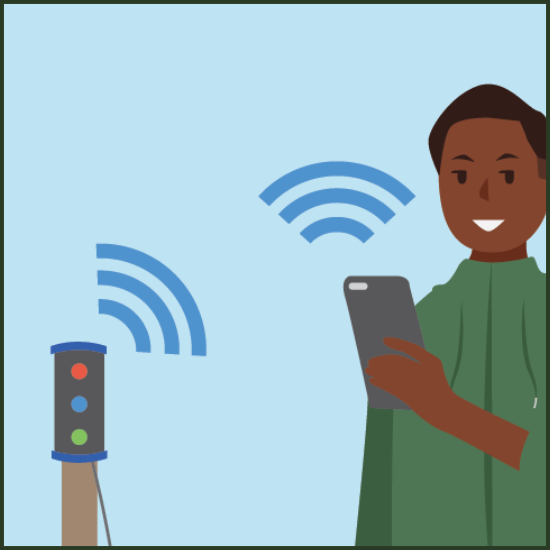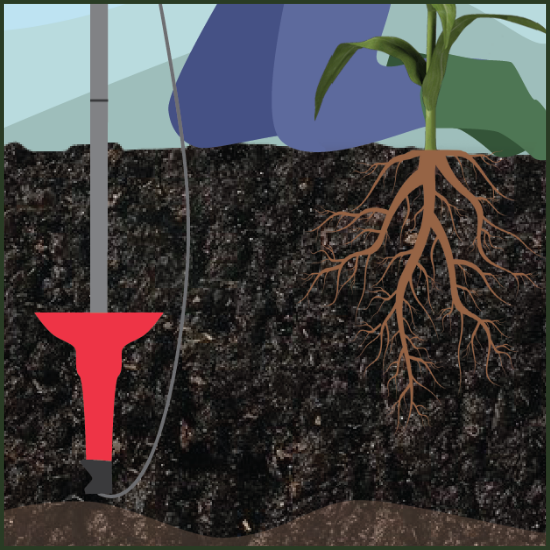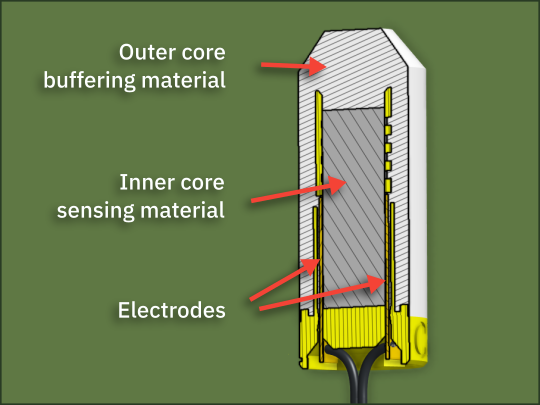The Chameleon Card is our most simple system to use.
The Chameleon Card System consists of three or six Chameleon sensors together with a credit card sized reader. The sensors are permanently buried, with the wires attached to a stake in the ground. To measure the soil water status, the wires are placed into the slots in the card reader. The LED on the card will turn blue (wet), green (moist) or red (dry) to show the soil water status at each location.
Sensors can be placed to measure at one depth in different locations or at several depths in one location.
The reader does not store data or have any wireless communications.




